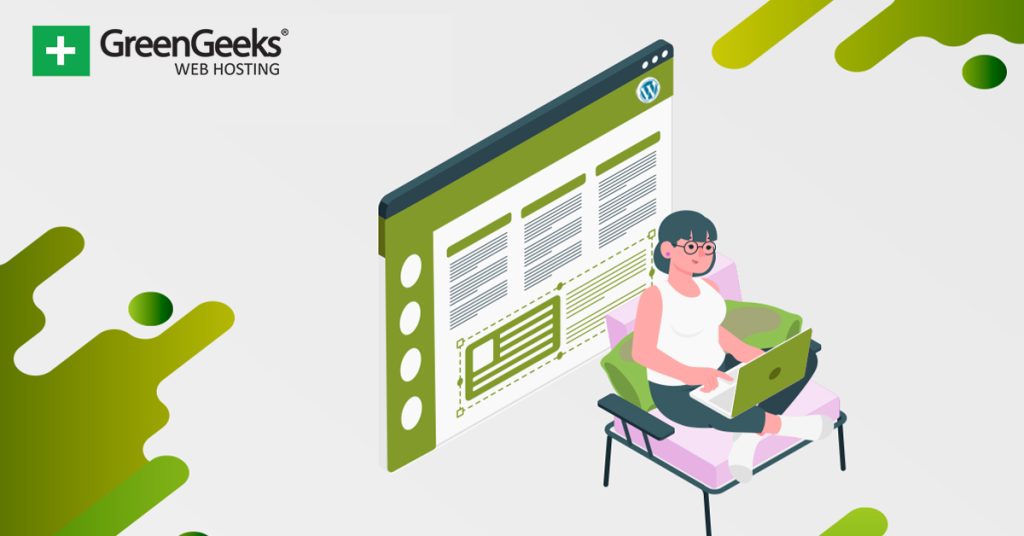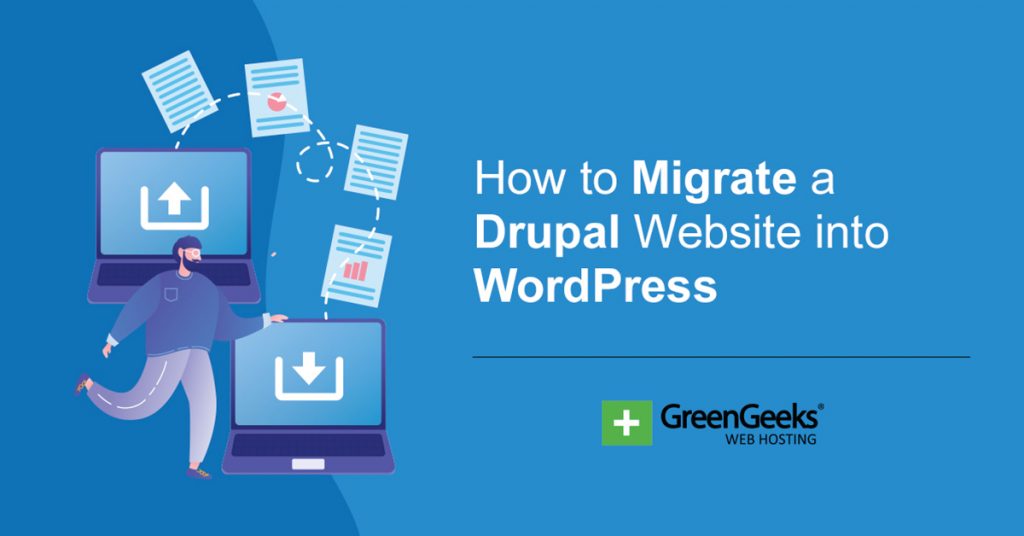If you’re planning to start a blog but already feel overwhelmed about how to do it, this article is for you.
While the idea of creating a blog site sounds like a thrilling adventure, many new bloggers are stuck with picking the right platform, dealing with technical stuff, making interesting posts, and getting people to read their content.
These hurdles are common, and they can stop many from starting or continuing their blogging endeavors.
But don’t worry, with the right guide, blogging can be a fun journey. In fact, blogging can lead to sharing your thoughts, meeting new people, and even making some money.
This guide is here to make blogging for beginners simple. We’ll break down each step and give practical tips to make the task of blogging easy and fun.
Ultimately, we aim to give you a clear path to not just start a blog, but create one that connects with readers and stands out online.
Understanding the Basics of Blogging

Let’s begin this guide by understanding some basic terms. A blog is a website where individuals or groups can share their thoughts, insights, and experiences on various topics in an informal or conversational style.
Blogs often include text, images, videos, and links to other relevant content. Over time, blogs have evolved to cover a wide range of topics, and they can be personal, professional, or focused on a particular subject matter or industry.
Basic terms for understanding blogging include:
- Hosting: Web hosting is a service that stores your website files on a server, making your site accessible on the internet. It’s crucial for making your website available to users anytime.
- Domain: A domain is a unique address where people can find your website on the internet.
- CMS (Content Management System): A CMS is software that helps create, manage, and modify website content without needing technical skills. Examples include WordPress, Joomla, and Drupal.
- SEO (Search Engine Optimization): SEO is the practice of improving a website to increase its visibility in search engine results.
As you proceed with the article, you’ll learn more about each of these terms and how they’re related to start building a successful blog.
Overview of Blogging Platforms
In blogging, choosing the right platform is crucial as it forms the base where your content will live. Let’s explore some popular blogging platforms below:
WordPress
WordPress is a simple yet highly efficient platform for blogging. It’s used by many people online, from personal bloggers to big companies. In fact, WordPress currently powers more than 43% of all websites on the Internet.
As time went by, WordPress grew from a basic blogging tool to a system that can manage different types of websites, like online shops. Because it’s open source, many people, like designers and developers, contribute by creating themes and plugins for others to use.
There are two types of WordPress: WordPress.com, which is hosted and easy to set up, and WordPress.org, which you host yourself and can customize further.
Benefits of WordPress:
- WordPress has many themes, plugins, and extensions that let you make your blog look and work the way you want
- It’s easy to use, so you don’t need to know a lot about technology to create and manage your content
- Since it’s open source, you can change things around to suit your needs
Drawback of WordPress:
- If you want to do more complex customizations, you might need some coding knowledge which can be tough for beginners
Blogger
Blogger is a platform owned by Google to make blogging straightforward.
It’s easy to use and connects well with other Google services, which is handy if you use Google a lot. Setting up a blog is easy and quick with Blogger.
While it doesn’t have as many customization options as WordPress, Blogger is reliable and simple for those who just want to write and share their thoughts online. Its simple style makes it easy for new bloggers to start writing and sharing right away.
Benefits of Blogger:
- Since it’s owned by Google, it works well with other Google products
- It’s very beginner-friendly
- Blogger gives free and dependable hosting which keeps your blog online
Drawback of Blogger:
- It has older designs and doesn’t let you customize things as much as WordPress does
Medium
Medium is a cool mix of a traditional blog and a social network. It helps writers share their work with a ready audience, saving them from the trouble of building and promoting a website from the start.
This platform loves high-quality writing. It lets you share stories, ideas, and more on many different topics. Plus, with Medium’s Partner Program, writers can earn money when people engage with their work.
Benefits of Medium:
- With its large community, writers can reach many readers from the start
- It has a simple, clean design that makes reading enjoyable
- It’s easy to use, so it’s a good place for beginners
Drawback of Medium:
- Unlike WordPress, Medium doesn’t offer much room to change things up and you can’t use your own domain name
How to Start a Blog the Right Way
Step 1: Planning Your Blog
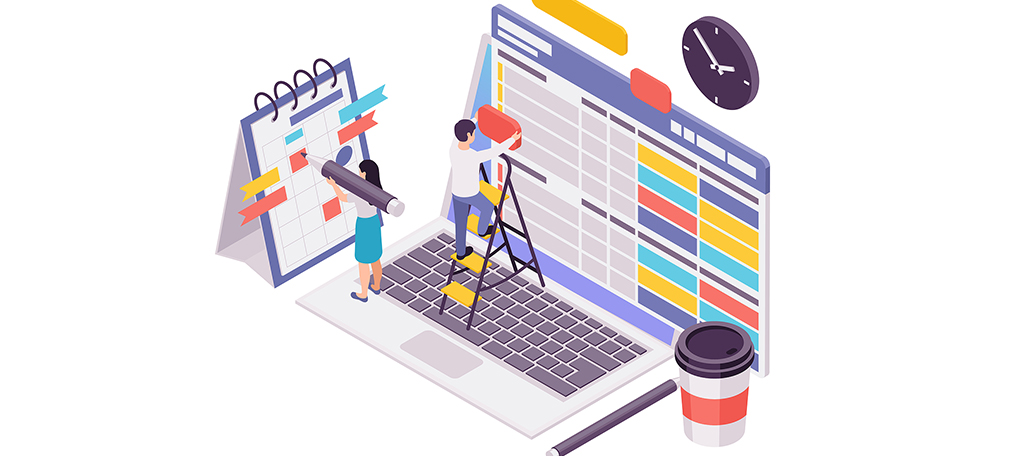
Planning is a big step towards a successful blog. It helps set a strong base for your blog to grow.
Part of the planning process on your blog site is choosing your niche, setting clear goals, and identifying your target audience.
How To Choose Your Blog Niche
A niche is a specific topic or area that you will focus on. This is important because it decides what you will write about and who your readers will be.
Taking time to choose the right niche can help make your blogging journey enjoyable and rewarding.
So, how do you go about deciding on a good niche?
Identify Interests and Skills
Start by figuring out what you’re good at and what you enjoy. There are many online tools to help find your strengths. Also, make a list of topics or activities you like or know a lot about. This way, you’re more likely to enjoy blogging.
You can also think about your hobbies or past experiences. They could be a rich source of ideas for your blog. Reflecting on these can help find a niche that will drive your success forward.
Research Market Demand
It’s important to pick a niche people are interested in. Use keyword research tools like Semrush and Ahrefs to see how many people search for topics you’re considering. This gives an idea of how popular those topics are.
Additionally, look at other blogs in niches you’re considering. See what topics they cover. Finding topics they haven’t covered much could be a chance for your blog to stand out.
Checking out the competition helps to understand the market and find a unique angle for your blog.
Setting Clear Goals
Goals provide a roadmap and a sense of direction that will keep you focused and motivated throughout your blogging journey. They allow you to measure your progress, understand what’s working, and make informed decisions to steer your blog toward success.
Here are some ways to set effective goals for your blog.
Define Short-term and Long-term Goals
Short-term Goals:
These are goals you aim to achieve in the near future, maybe in the next three to six months. Examples include reaching a certain number of subscribers, publishing a set number of posts, or getting a specified number of shares or comments.
Short-term goals help maintain momentum and provide early wins to keep you motivated.
Long-term Goals:
Long-term goals are your broader objectives that may take a year or more to achieve. They could be related to monetization, traffic milestones, or building a strong community around your blog.
Long-term goals give you a bigger picture and a long-term vision for what you want to achieve.
SMART Goals Framework
Utilizing the SMART (Specific, Measurable, Achievable, Relevant, Time-bound) goals framework can significantly enhance the effectiveness of your goals.
- Specific: Your goals should be clear and specific. Instead of saying “I want more subscribers,” say “I want to reach 1,000 subscribers.”
- Measurable: You should be able to measure the progress and success of your goals. For instance, tracking the number of subscribers or the amount of traffic your blog receives.
- Achievable: Make sure your goals are realistic and achievable with the resources available to you.
- Relevant: Your goals should be relevant to the overall objective of your blog.
- Time-bound: Set a deadline for your goals. Having a timeframe creates a sense of urgency and keeps you on track.
Establishing a Timeline and Milestones
Creating a timeline with milestones for each goal can provide a structured approach to achieving your objectives.
A timeline breaks down your goals into smaller tasks and allocates a timeframe for each one.
Milestones, on the other hand, set significant points along the way to track your progress. Celebrating these milestones can provide motivation and a sense of accomplishment.
Identifying Target Audience
Identifying who your blog speaks to is a crucial step when you decide to start a blog.
One way to do this is by creating audience personas. These are imaginary profiles of your ideal readers based on real data and educated guesses.
It’s also important to know the problems or desires your audience has. This insight will guide what you write about on your blog. You want to write posts that solve their problems or help them achieve their goals.
Another way to understand your audience is by asking them directly. You can create simple surveys or questionnaires and share them online.
Ask about their challenges, interests, and the kind of content they find useful. This interaction not only gives you useful information but also starts building a relationship with your audience.
Step 2: Setting Up Your Blog

Domain Name Selection and Registration
Now that you’ve planned and envisioned what your blog will be all about at the start, it’s time to pick and register a domain name for it. Your domain name is your online address, making it easy for people to find you.
Let’s go over how to choose and register a domain name.
1. Create a Unique and Memorable Domain
A catchy domain name is important. It’s the first thing people see, and it helps them remember your blog. A short, snappy domain name can make your blog look professional and easy to find again.
For instance, let’s say you are starting a blog about home baking. A domain name like “BakingDelights.com” is catchy, easy to remember, and clearly tells what your blog is about.
It’s better than a long, confusing domain like “BakingAtHomeForBeginners123.com.”
2. Check Domain Availability
Before you get your heart set on a domain name, check if it’s available. There are many online tools like GoDaddy or Namecheap for this. As a general rule, it’s good to think of a few different names in case your first choice is taken.
3. Register the Domain
Once you find a domain name you like, and it’s available, you can register it easily online. You can do this by either using a domain registrar or though a web hosting provide, which I’ll cover in a moment.
The benefit to using a web host to register your domain name is that it helps you keep things organized by using one company.
When registering the domain, you will also need to choose a domain extension. These extensions are the endings like .com, .blog, or .net. The most common is .com, but others might fit your blog better.
For example, .blog is great for bloggers, and .net is good for tech-related blogs. But, .com is often seen as the most professional and easiest to remember.
Choosing a Hosting Provider
After deciding on a domain name, the next pivotal step to start your blog is choosing a hosting provider. A hosting provider is where your blog will “live” online; it’s a service that stores your blog data and makes it accessible on the internet.
Let’s discuss the different types of hosting, factors to consider in selecting a hosting provider, and some recommendations.
Types of Hosting
There are three main kinds of hosting:
- Shared Hosting: Your blog shares space with other websites on a server. It’s the cheapest option but can be slow, especially if other sites on the server get a lot of visitors.
- VPS (Virtual Private Server) Hosting: VPS hosting provides you with a virtual dedicated segment of a physical server. This option offers better speed and reliability compared to shared hosting, without the cost of a dedicated server.
- Dedicated Hosting: This type offers a server all to yourself, providing the highest level of resource allocation, privacy, and control. However, it’s the most expensive and is often overkill for new or smaller blogs.
Key Factors to Consider for a Hosting Provider
When choosing a hosting provider, consider the following key factors:
- Speed: The speed at which your blog loads is crucial for user experience and SEO. Look for hosting providers that offer fast server speeds.
- Uptime: Uptime is the amount of time your blog is accessible online. Aim for hosting providers with an uptime of 99.9% or higher.
- Support: Excellent customer support can be a lifesaver when facing technical issues. Look for providers with strong customer reviews regarding their support and 24/7 availability.
How To Install WordPress
Getting the right blogging software is the next big step in your journey to start a blog. Among the various blogging platforms available, WordPress stands out due to its ease of use, flexibility, and vast community of users and developers.
Installing WordPress is straightforward, and many hosting providers offer one-click WordPress installations. Here’s a simplified guide to get WordPress up and running:
- Select a Hosting Provider: Choose a hosting provider that supports WordPress.
- Domain Name: Have your domain name registered and ready, or obtain one through your web hosting provider.
- Install WordPress:
- Log into your hosting account.
- locate the WordPress or website/script installer section.
- Click on the WordPress icon and follow the on-screen instructions.
- Fill in the necessary details like your site name, admin username, and password.
- Click Install, and within a few minutes, WordPress should be installed on your domain.
Once installed, you can log in to your WordPress dashboard using the credentials you set during installation. From here, you can start customizing your blog, choosing themes, and writing your first post.
Step 3: Designing Your Blog
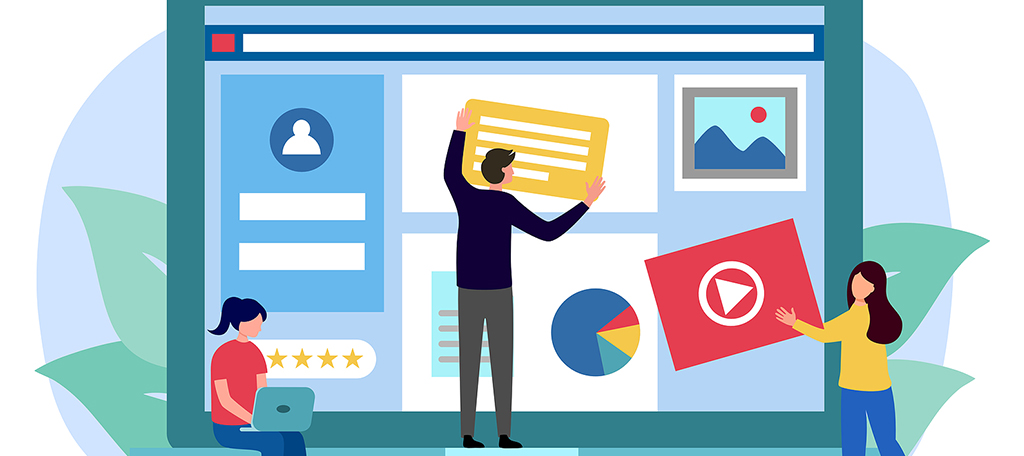
Designing is a fun and critical step when you decide to start a blog. It’s about picking a style that reflects you and keeps your readers comfortable. A big part of this process is choosing a theme.
In web designing, a theme refers to a set of design elements and templates that define the appearance and layout of the site.
It includes aspects like color schemes, font styles, page layouts, and graphical elements that together create a particular look and feel for the website.
How to Choose a Theme
1. Free vs Premium Theme
When it comes to themes, you have two main choices: free or premium.
Free themes are great if you’re on a budget. They come with a simple design which can be nice for a clean look. However, they might not have all the bells and whistles of premium themes and you might have to rely on community forums for help.
On the other hand, premium themes do cost money, but usually, it’s a one-time fee. They come with more features and ways to make the theme your own. They often look more polished and you get help and updates from the theme developers, which can be a big help.
2. Responsive Design
Many people will visit your blog from their phones, so you need a responsive design. This makes sure your blog looks good on phones, tablets, and computers.
It’s important to pick a theme that works well on mobile to give your readers a good experience no matter how they visit your blog. Try the theme on different devices to make sure it looks good on all of them.
3. Theme Customization Options
Being able to change things up is key to making a blog that feels like yours. Look for themes that let you customize elements of your website easily. It’s also fun to play with colors and fonts to match your style.
And don’t forget to make sure the theme works with any plugins you want to use. This will help avoid any headaches later on.
Customizing Design Elements
After selecting a theme for your blog, the next step in crafting a visually appealing and user-friendly site is customizing various design elements. This is where you can inject your personality and brand identity into your blog.
Logo and Branding
Your logo is often the first thing people notice when they land on your blog. It’s a visual representation of who you are and what your blog is about.
A well-designed logo can help establish credibility and foster brand recognition. If you’re not a designer, consider hiring a professional or using logo design tools available online. Your logo should be simple, memorable, and reflective of your blog’s content and ethos.
Color Scheme and Typography
Colors evoke emotions and reactions. Choose a color palette that resonates with your blog’s tone and audience. Make use of online color palette tools to create a harmonious color scheme.
The right fonts also contribute to the readability and visual appeal of your blog. Choose fonts that are easy to read and pair well together. It’s also best to keep font usage consistent across your blog.
Layout and Navigation
Your website’s layout should be clean, with a clear distinction between different sections like the header, content area, sidebar, and footer.
A simple, intuitive navigation menu helps readers find what they’re looking for quickly. Include essential pages like Home, About, Blog, and Contact in the main navigation menu of your site.
Step 4: Creating Quality Content

Creating good content at the start is the heart of a successful blog. It’s what makes readers come back for more. When you start a blog, having a solid plan for your content is key.
Content Planning and Strategy
To effectively plan your blog content, here are some steps that you must consider doing.
1. Content Calendar Creation
A smart content strategy is like your roadmap in the blogging journey. It helps you stay organized, keep a regular posting schedule, and make sure your content meets your goals.
The first step here is creating a content calendar. This proactive step gives you a well-planned lineup of content, helps you decide how often to post, plans for seasonal or trending topics in advance, and keeps track of deadlines for drafting, revising, and publishing content.
Project management tools like Jira, Trello, or Google Calendar can be used for this, and it’s good to choose one that fits your workflow well.
You can also use various plugins in WordPress to keep the publishing calendar in front of you in the admin panel.
2. Identifying Key Topics and Categories
Next up, finding the key topics and categories when you start your blog is a basic step toward building a structured website. It involves tuning into what your audience is interested in, picking topics that match your expertise and interests, and staying updated with the latest trends in your niche.
The categories on your blog should cover a range of your key topics that will offer a well-rounded range of content to your readers.
3. Research and Preparation
Diving deep into each topic to gather facts, statistics, and useful information is essential for high-quality content.
At the same time, doing keyword research to find SEO-friendly keywords and phrases, and checking out competitors to learn from what they’re doing right or wrong are smart moves.
This research phase is a great chance to collect all the useful insights and information needed to create engaging, informative posts.
Writing Engaging and Informative Posts
Creating a blog that captivates and educates your readers is a blend of art and science. Your posts need to be engaging yet informative, guiding your readers through an experience that leaves them enlightened and craving for more.
With that in mind, below are practical tips on how to start writing your blog content effectively.
1. Create Captivating Headlines
The headline is the doorway to your content. It’s the first thing readers see, and it can make or break their decision to read further. Crafting a headline that is both enticing and informative is crucial.
Here are some pointers that you should take note of when creating headlines:
- Use Strong Language: Employ powerful and emotional words to evoke curiosity and interest.
- Be Clear and Precise: Your headline should give a clear idea of what the post is about. Avoid being vague or misleading.
- Use Numbers and How-To: Headlines with numbers (e.g., “5 Ways to…”) or how-to are proven to attract more clicks.
- SEO Consideration: Incorporate relevant keywords in your headlines to improve search engine rankings.
A great headline creator tool is Headline Studio by CoSchedule. This web-based app will analyze your headline and deliver a “score” to show how effective it will be for your readers. The free version is nice, but you’ll get far more tools by paying for the premium service.
2. Balance Information with Engagement
Mixing useful information with a fun reading experience is a technique that can really make your blog posts engaging.
When people visit your blog, they are usually looking for answers or new knowledge. So, it’s key to have posts that are packed with useful insights or solutions to their problems.
But, you also want to keep them hooked. A friendly tone, sharing personal stories, and asking questions can help make a stronger bond with your readers.
3. Utilize Images and Multimedia
Blogging isn’t just about writing. Adding pictures, videos, or infographics can break up long text and help explain tricky ideas. It also keeps your readers interested because the human brain is more receptive to visuals than just plain text.
Now, where do you get good, royalty-free pictures? You can find a lot of them on websites like Unsplash or Pixabay. Just make sure they are free to use or have the right licenses to avoid any trouble.
Or, you can also create your own graphics using tools like Canva or Adobe Spark.
Videos can take your blog to the next level. They can help explain hard topics, show off products, or share personal stories. YouTube is a good place to host your videos, and then you can easily add them to your blog posts.
And if you like making podcasts or audio content, adding these to your blog posts can give your readers a richer experience. You can also add fun interactive stuff like quizzes, polls, or interactive infographics to make your blog more lively and engaging.
4. Edit and Proofread
Proofreading is where you check if your post is clear and flows well, going smoothly from one idea to the next. It’s the last step to fine-tune your words, fix the structure, and make sure your post says what you intended in the right tone.
Checking grammar and spelling is very important; tools like Grammarly can help catch errors you might have missed. You could go so far as to install the free Grammarly Chrome extension, which works perfectly in WordPress.
Reading your post out loud can also help find awkward parts and see where punctuation might be needed. Sometimes, a part that reads well in your head might sound odd out loud.
It’s also a good idea to have someone else read your post. Fresh eyes can see new things and catch mistakes you might have missed.
Step 5: Implement SEO (Search Engine Optimization)

SEO, or Search Engine Optimization, is a critical aspect of online visibility for any blogger aiming to reach a wider audience. If you want to build a successful blog from the start, you’ll need to understand SEO.
After all, what purpose is having high-quality content on your blog site if people can’t easily search for it?
How Search Engines Work
Understanding how search engines work is key to boosting your SEO efforts. The three main steps are crawling, indexing, and ranking. Let’s break these down into simpler terms.
First up is crawling. Imagine search engines have little robots that go around the web looking for new or updated content. These robots, called crawlers or spiders, move from page to page, collecting data. They’re like scouts exploring the digital world.
Once the crawlers find the data, the next step, indexing, begins. All the collected data gets organized and stored, ready to be pulled up when needed. This step helps search engines quickly find the information when someone looks for it.
The last step is ranking. When you look for something on a search engine, it looks through all the indexed info to find what matches your search the best. It then shows you a list of results, with the most relevant ones at the top.
The order of these results is determined by many factors that we will be discussing further below.
Core SEO Principles
Having a grasp of core SEO principles is crucial in creating a solid foundation for your blog’s online presence.
Let’s discuss the major factors that determine whether your blog will rank up the search engine ladder.
Keyword Research
Identifying and integrating relevant keywords into your blog is a must. It’s about understanding the terms your potential readers use to search for the content you provide.
On-Page Optimization
This involves optimizing elements like titles, meta descriptions, and content structure to make your blog search-engine friendly.
Off-Page Optimization
Off-page SEO encompasses actions taken outside of your blog like building backlinks, which signal to search engines the quality and relevance of your content.
Technical SEO
Ensuring your blog is technically sound, with a fast loading speed, mobile responsiveness, and a secure connection, forms the bedrock of SEO.
By optimizing your blog for search engines, you significantly enhance its visibility and, by extension, its ability to attract a larger audience. In short, investing in SEO early on will pave the way to your blog’s future success.
Keyword Research and Optimization
Keyword research is a major task when you plan to start a blog. Let’s go through the steps on how to do it right.
1. Finding the Right Keywords
The first step in keyword research is identifying the right keywords – words or phrases that people use in search engines to find content.
Begin by brainstorming keywords related to your blog’s topic. Use tools like Google Keyword Planner, SEMrush, or Ahrefs to find keyword suggestions and view data on search volume and competition.
It’s advisable to target keywords with a decent search volume but lower competition, especially when you’re just starting out.
Understanding the intent behind keywords is also crucial; it helps ensure that your content matches what users are looking for.
2. Keyword Placement Strategies
Once you have a list of keywords, the next step is to strategically place them in your content. Here are some effective keyword placement strategies:
- Title Tag: Include your main keyword in the title of your blog post.
- Headings and Subheadings: Use keywords in headings and subheadings to emphasize the importance to search engines.
- Introductory Paragraph: Include keywords naturally in the first few sentences of your content.
- Body Text: Sprinkle keywords throughout the body text, but avoid keyword stuffing. Aim for a natural flow.
- URL: Incorporate the main keyword in the URL of your page.
- Meta Description: Include keywords in the meta description to improve click-through rates from search results.
3. Long-tail Keywords and Their Importance
Long-tail keywords are phrases that are longer and more specific than common, high-search volume keywords. They often have lower search volume but higher conversion rates due to their specificity.
For example, “how to start a blog on WordPress for gaming” is a long-tail keyword. In this case, the focus is on “starting a blog” using “WordPress” for a “gaming” niche.
Moreover, long-tail keywords help in attracting a more targeted audience who are likely closer to the point of making a decision or taking action.
Incorporating long-tail keywords in your content strategy can significantly impact your blog’s traffic and engagement levels. By focusing on a mix of broad and long-tail keywords, you create a balanced keyword strategy that drives both traffic and conversions.
Off-Page SEO Strategies
Off-page SEO refers to actions taken outside of your blog to boost its rankings on search engine results pages (SERPs).
This aspect of SEO is crucial as it informs search engines on how the world perceives your blog. Below are some strategies that you can implement in your blog.
Backlinking and Guest Posting
Backlinking is the practice of obtaining links from other websites that point back to your blog. Each backlink acts as a vote of confidence, signaling to search engines that your content is valuable and worthy of ranking higher on SERPs.
Guest Posting is another effective off-page SEO tactic. By writing quality posts for reputable blogs within your niche, you can reach a wider audience, establish authority, and earn backlinks to your blog.
To build a robust backlink profile, you could reach out to bloggers within your niche and request guest post opportunities or offer valuable insights in blog comments, which may sometimes allow you to leave a link back to your blog.
Local SEO
Local SEO is particularly crucial for blogs that cater to a local audience. Listing your blog on local directories and engaging in local online communities can help improve your blog’s visibility in local search results.
Step 6: Promoting Your Blog

Promoting your blog helps it grow and become influential in your niche by reaching more readers. It also engages your audience, builds your expertise, and encourages important conversations.
Plus, it’s a key step in making money from your blog or using it to market products or services.
Social Media Marketing
Social media is a powerhouse for promotion. Here are steps that you can take to utilize social media to promote your blog at the start.
1. Start by creating profiles on major platforms. Each platform can be distinctly utilized to promote your blog accordingly.
- Facebook: Share or start a blog post on your personal profile, business page, or in relevant Facebook groups related to your blog’s niche.
- Twitter: Tweet links to your blog posts and use relevant hashtags to reach a broader audience.
- Instagram: Share visually appealing snippets of your blog content in your posts and stories, with a link to the full post in your bio.
- LinkedIn: Publish articles on LinkedIn’s platform, and share your blog posts in your feed and relevant LinkedIn groups.
- Pinterest: Create pins for your blog posts with eye-catching graphics and descriptions. Pinterest is especially effective for visual or lifestyle blogs.
- Quora: Answer questions related to your blog’s topic and include links to relevant blog posts when they provide additional value.
2. Share your content regularly on these platforms. When you publish a new blog post, make sure to share it on your social media profiles. This keeps your audience informed about your latest insights.
3. Engage with your followers. Respond to comments, answer questions, and foster conversations. It’s a great way to build a community around your blog.
4. Don’t forget to utilize hashtags and trends. Incorporating relevant hashtags into your posts can make your content more discoverable. Follow trends in your niche and participate in conversations to boost your blog’s visibility.
Email Marketing
Email marketing helps promote your blog by creating a dedicated list of readers who want to hear from you. You can then send your newest content directly to their email inboxes, making it easier for people to find and read your blog posts.
Building an Email List
Creating an email list to promote a blog involves these key steps:
- Create a Signup Form: Design an attractive signup form that’s easy to find and use on your blog.
- Offer Incentives: Giving subscribers bonuses, like special content or discounts, can really help you get more people to sign up.
- Quality Content: Always post interesting, high-quality blog posts to get new readers and keep the ones who might subscribe.
- Social Media Promotion: Use your social media presence to promote your email list and reach a broader audience.
- Networking and Collaboration: Reaching out with others in your niche can help you tap into new subscriber pools.
- Run Contests and Giveaways: Hosting contests and giveaways with a subscription requirement can rapidly grow your list.
Utilizing Automation Tools
After fine-tuning your email marketing, it is important to utilize automation tools to streamline the process. Opt for tools that help you segment your list, set up drip campaigns for automated follow-ups, and personalize emails with recipient details.
Some tools that you can use to start your newsletters and email marketing for your blog include:
- ConvertKit: Considered the most blogger-friendly with tailored features for content creators.
- Mailchimp: User-friendly and widely adopted, suitable if you want to start a blog and if you’re looking for a straightforward solution.
- AWeber: Well-regarded among bloggers, particularly those seeking a robust email marketing platform.
- Brevo: Known for its affordability and basic email marketing features, suitable for small bloggers.
- Constant Contact: Simple and beginner-friendly, good for bloggers looking for a straightforward email marketing tool.
Guest Blogging and Networking
Promoting your blog is an important step to start building an audience and establishing a presence within your niche. One effective way to achieve this is through guest blogging and networking.
Let’s dive into the steps involved in this process:
1. Identify Reputable Blogs in Your Niche
Start by researching and identifying reputable blogs within your niche. Look for blogs that have a significant following, active engagement, and content that aligns with your own blog’s focus.
Utilize tools like BuzzSumo or SEMrush to find blogs with high domain authority and a strong readership. Also, consider checking out social media platforms and online communities related to your niche to discover popular blogs.
2. Create Guest Post Pitches
Once you have a list of potential blogs, it’s time to craft your guest post pitches. Your pitch should be concise, personalized, and clearly outline the value you can provide to the blog owner’s audience.
Propose a few topic ideas that align with their blog’s content and provide a brief outline of what you plan to cover. It’s also a good practice to familiarize yourself with their guest post guidelines, if available, and adhere to them while crafting your pitch.
3. Build Relationships with Other Bloggers
Guest blogging is not just about gaining exposure; it’s an opportunity to build lasting relationships with other bloggers in your niche. Engage with them on social media, comment on their posts, and share their content.
Over time, these relationships can lead to collaboration opportunities, referrals, and a stronger online presence for your blog.
4. Participate in Community Events and Forums
Engaging in community events and forums related to your niche is another excellent way to network and promote your blog. Participate in discussions, offer valuable insights, and help solve problems faced by community members.
This not only helps in building relationships but also positions you as an authority in your niche. When appropriate, you can share links to relevant posts on your blog to provide further information.
Remember, the goal is to add value, not to spam these platforms with your links.
Step 7: Monitoring and Analyzing Your Blog Performance

Once your blog has been set up, it’s important to keep an eye on and analyze its performance. Doing so tells you which parts of your content your readers like and which ones need some tweaking.
Here are three steps to properly monitor and analyze your blog.
1. Setting Up Analytics Tools
Setting up analytical tools should be a priority as you start a blog. The data these tools collect can be instrumental in how you publish future content.
Each analytics tool may have specific setup instructions, so following their guidelines for accurate data collection and analysis is essential.
Installing Google Analytics is a great starting point for doing so. It’s user-friendly and provides a wealth of data that’s vital on how to make a blog stand out.
Creating an account and adding a tracking code to your blog is usually a straightforward process. Once in place, it quietly collects data about your blog’s visitors.
Understanding Key Metrics
Here are some of the most important metrics to monitor on your website:
- Page Views indicate how many times your blog posts have been viewed.
- Unique Visitors show how many distinct individuals have visited your blog.
- Bounce Rate reveals the percentage of visitors who leave your blog after viewing only one page.
- Conversion Rate helps evaluate the effectiveness of your calls to action.
- Traffic Sources help you determine where your traffic comes from.
- Top Pages/Posts allow you to understand what resonates with your audience and how to make a blog post in a similar vein.
- Time on Page: Longer page stays indicate strong engagement as visitors read and engage with your content.
2. Evaluating Your Traffic and Engagement Metrics
When you understand where your visitors are from and how they like your content, you can use this information to make data-driven decisions. This helps you create content that’s not only more exciting but also more helpful for your visitors.
Analyzing Traffic Sources
Analysis of traffic sources shows where your blog’s visitors come from, such as search engines, social media, or other websites. Knowing this lets you focus on the best places and tailor your content and promotion to them.
Identifying Top-Performing Content
You can identify top-performing content by analyzing page views, comments, and shares.
What topics resonate most with your audience? Capitalize on these insights by creating similar content that caters to your readers’ interests.
3. Adjusting Strategies Based on Analysis
You can improve your content and promotion strategies by reviewing them on a regular basis to see what’s working and what’s not.
Identifying Areas for Improvement
To find ways to make a blog better, you need to take a close look at different factors:
- Content Quality: Is your content interesting, relevant, and of high quality?
- User Engagement: What about the time on the page, click-through rates, and bounce rates?
- Keyword Optimization: Are you checking how well your blog is doing with SEO to improve keyword targeting and ranking?
- Conversion Rate: Does your blog have specific goals? Can you optimize pages and elements to improve conversion rates?
- Design and User Experience: Do you have a user-friendly layout and intuitive navigation?
- Mobile Optimization: Is your blog easy for people on mobile devices to find and use?
A/B Testing
Often referred to as split testing, A/B Testing is a method of comparing two versions of a web page, email, or piece of content to determine which one performs better.
It’s an effective process when you start a blog. It’ll help outline what methods work best when you’re unsure how your audience will respond.
For example, you could use A/B testing to compare two different headlines on a blog post to see which one encourages more readers to click and read the content. Or you could test variations of a call-to-action button to determine which one results in more conversions.
Updating SEO and Promotion Strategies
As search engines update their algorithms, content trends and audience behavior change. Keeping your SEO and promotion strategies current will help your blog stay visible to search engines, reach its target audience, and adapt to the ever-changing online environment.
This proactive approach is necessary to keep your blog’s performance and relevance high and to make it even better over time.
Updating the SEO and marketing strategies for your blog includes the steps below:
- Staying up-to-date with relevant keywords is important to rank well in search results and reach your target audience effectively.
- Building and maintaining high-quality backlinks is essential for boosting your blog’s authority and search engine rankings.
- Continuously improving and updating your content ensures it remains valuable, relevant, and engaging to your readers.
- Keeping your on-page SEO elements, such as titles, meta descriptions, and headers, current and aligned with best practices enhances your blog’s search engine visibility.
Expanding your content promotion efforts ensures that your content reaches a wider audience and maintains its relevance.
Step 8: Monetizing Your Blog

When you start a blog and share your ideas, it can be exciting. But turning it into a money-making venture takes time. Once you’ve created great content and promoted your blog, the good news is making money from it comes next.
Blogs have the potential to be profitable but don’t expect instant riches. It often takes six months to a year to see a significant stream of income out of your site.
Blogging for beginners requires hard work and dedication, but as your audience grows, you can explore multiple ways to monetize your blog.
One common method is advertising. This is like having billboards on your blog where companies pay you to display their ads. It’s a steady source of income as long as your blog gets traffic.
Sponsored posts are another option. In this approach, you are getting paid to post an article on your blog site about a product or service.
Donations and crowdfunding are also viable. Think of it as your blog’s tip jar. Some readers might appreciate your content so much that they’re willing to donate or support your work through various platforms.
Affiliate Marketing
Another way to monetize your blog is through affiliate marketing. It’s a method where you promote products or services on your blog from external companies.
This method may be similar to a sponsored post, but they are two different things. With sponsored posts, you usually receive a fixed and upfront fee from brands for your posts.
Affiliate marketing, on the other hand, includes unique affiliate links in your content. When your audience clicks on these links and makes a purchase, you earn a commission, which is typically a percentage of the sale or a fixed amount.
Here’s how it works:
1. Selecting Affiliate Programs
You can partner with companies through affiliate programs. There is no restriction on how many programs you can join.
Once you’ve become part of their program, affiliate links that are unique to you will be provided. Then, these links are used to track the traffic and sales generated through your promotion.
2. Promoting Affiliate Products
With your unique affiliate links, you can now start writing about the company’s goods and services on your blog. One way to do this is to review and recommend products, or you can add affiliate banners and links to your content.
Don’t forget to promote your affiliate content not just on your blog but in your email newsletters and on social media as well. Give your readers useful and interesting information to get them to convert.
3. Disclosing Affiliate Relationships
It’s important to be transparent with your readers. Disclose your affiliate relationships in your blog posts, ideally near the affiliate links and in a way that’s easy for your audience to understand.
Selling Products or Services
You can start to sell your products and services on your blog.
First, create and price your offerings. These could be anything from eBooks, courses, physical products, or even services like consulting.
Next, set up an online store. There are various eCommerce platforms that make this easy, like WooCommerce for WordPress. This serves as your digital storefront where visitors can browse and purchase what you’re selling.
With your products available in the market, promotion is key. You’ll need to tell your readers about your products or services. Write blog posts, use email marketing, and leverage social media to let people know what you’re offering.
Lastly, make sure that your buying process is simple and secure. This is done by using payment gateways that are trusted and reliable.
Step 9: Maintaining and Growing Your Blog
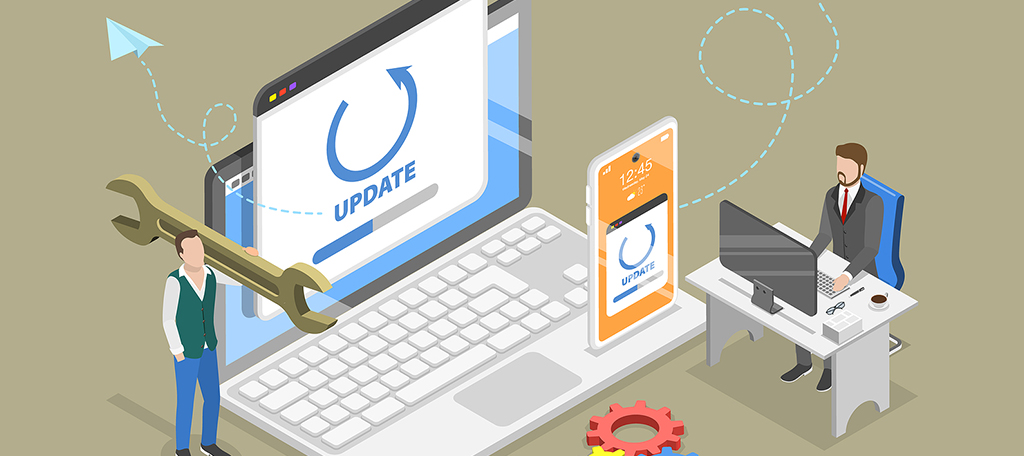
Maintaining a consistent presence on your blog is essential to its growth and continued success. The following are some suggestions that can assist you in expanding the readership of your blog.
Keep Your Blog Alive and Thriving
To ensure your blog stays lively and attracts more readers, remember to do a few key things regularly.
- Stick to a Schedule: Try to post new content on a schedule. This keeps your readers coming back for more and makes search engines notice your blog.
- Update Old Posts: Over time, your older posts may become outdated. Go back and refresh them with new info or ideas. This not only keeps your blog current but also helps it show up better in search results.
- Reuse Your Content: Don’t be afraid to use your blog posts in different ways. You can turn a popular post into a video, podcast, or infographic. This way, you reach more people and make your blog more visible across different platforms.
Connect with Your Audience
Engaging with your audience is a fundamental part when you start a blog. It’s how you build a loyal and active readership.
Let’s explore some simple yet effective ways to do this.
1. Respond to Comments and Messages
Take time to respond to blog comments and messages. This shows you value and care about your audience’s opinions. It also boosts blog engagement and discussion.
2. Conduct Surveys and Feedback Sessions
Surveys and feedback sessions can help you understand your audience. Ask what they like, what topics they want, and how you can improve your blog. This helps you tailor content and makes readers feel heard and valued.
3. Create Community Events or Challenges
Community building is a powerful tool for promoting your blog. Use events or challenges to engage and invite readers to share their stories.
Explore New Marketing Channels
Discovering new marketing channels is like finding different paths to promote your business. This is a great way to explore fresh opportunities and reach more people. Here are three ways to do it:
1. Check Out New Social Platforms
Keep an eye out for new social media sites that are becoming popular. By getting on board with these platforms early, you can grab the attention of a larger audience.
2. Try Paid Advertising
With paid advertising, you control where your ads show up, making it an effective way to launch a blog and reach more readers.
3. Partner with Influencers and Brands
Team up with people who already have a big following. Once you work with them, you can introduce your products or ideas to a larger audience.
Now Is the Best Time to Start a Blog
Building a blog site from scratch is an exciting step filled with possibilities. Through this guide, we’ve walked through the key steps to get you off on the right foot on this amazing journey.
The online world is big and always changing, but with a willingness to learn and a good plan, you can grow your blog over time and really enjoy it.
Now, it’s your turn to jump in. Your unique take on things is something the online world needs, and turning your ideas into engaging blog posts is just a click away!

